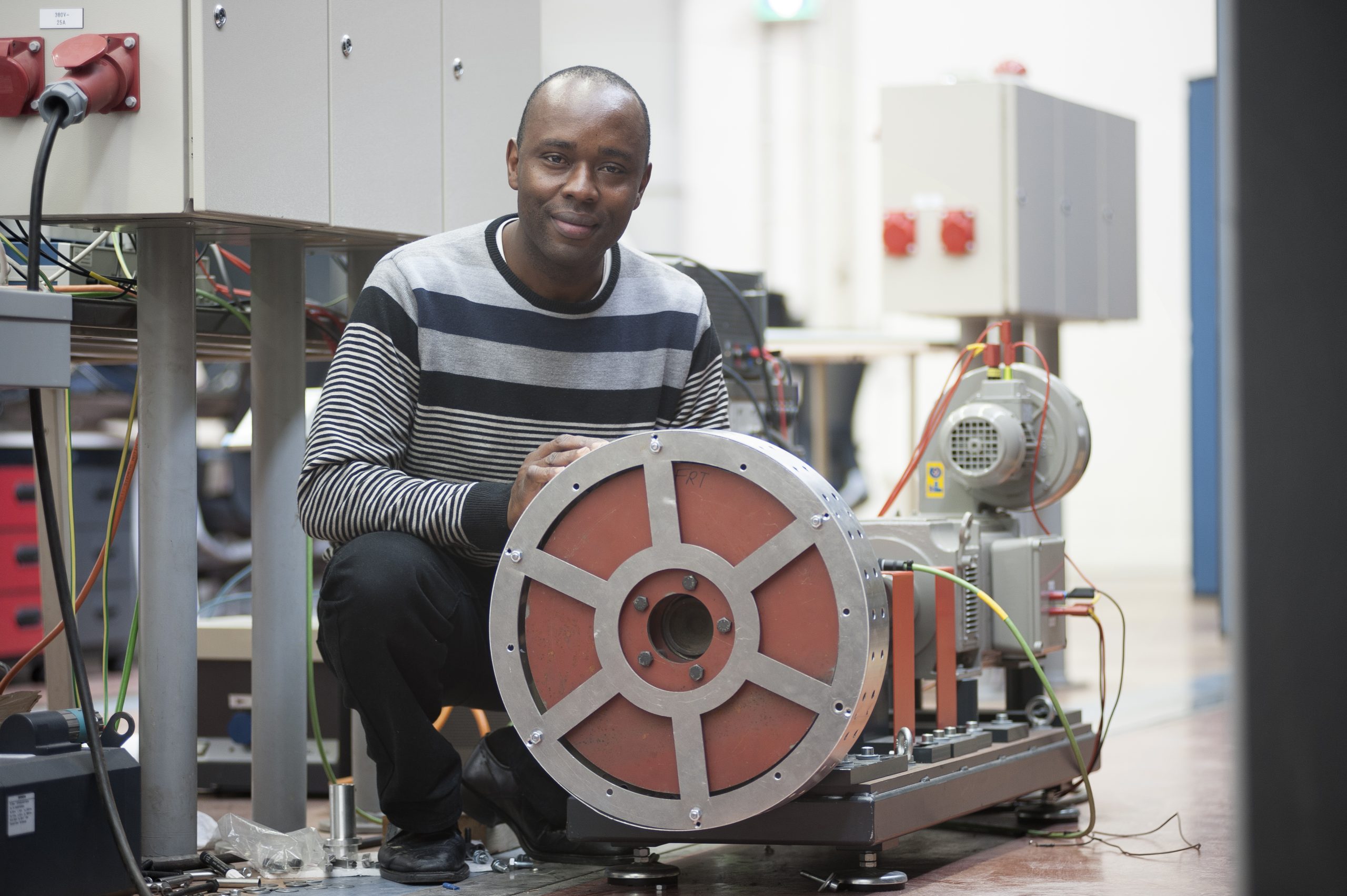“A thousand euros for a complete wind turbine system, that’s what I’m aiming for.” This is Dr. Sam Ani talking, who obtained a PhD in electrical engineering by successfully developing a low-cost generator for developing countries.
We tend to take access to electric power for granted and become annoyed, stressed or just plain helpless when a power cut occurs. For 1.3 billion people in developing countries, electricity is a far dream since they are either too far from any grid facilities, or they are on the end of the line where power cuts tend to last longer than the active periods. So what do people do? They start up their own mini generators in order not to have to sit in the dark without television.
Dr. Samuel Ofordile Ani from Nigeria set out to develop a low-cost generator. He is motivated to make green power accessible to those 1.3 billion people who are currently being left behind. In his scenario, a wind turbine driving a DC-generator can keep a set of batteries charged, thus providing electricity to those who are currently off-grid.
For the low-cost generator Ani compared two options: an alternator from a car (widely available for scrap prices all over Africa) and a direct drive generator by his own design.
The car alternator is the cheapest option to generate electricity provided you’re living in a windy region, says Ani. He explains such a system only works from wind speeds 3,5 m/s and higher. Since a car generator works best at 1500 rotations per minute, a gear box in needed in between the axis of the wind rotor and the generator. Although in practice this gear box may well be made from two wheels (big and small) connected by a belt.
At lower wind speeds, a direct drive generator will perform better since it has no transmission losses, and the start-up wind speed especially will remain low. Considering various options, Ani chose for a disk-shaped generator in which rotors with permanent magnets are located on both sides of a disk in the middle (the stator) on which a string of interconnected open coils is mounted.
“This generator can be made in any place where they have access to wood and a metal workshop. The coils can be wound around wooden templates, and then fixed into shape with a composite resin. A metal workshop or a blacksmith knows how to cut and shape the metal parts”, explains Ani. He estimates the material will cost 300 to 400 euros and it will take two man a day to assemble.
This generator is meant to at the heart of a low-cost 1 kW wind turbine system that can be locally produced for as little as 1,000 euros. “That is about the monthly salary of an assistant professor at the university”, says Ani who works as a lecturer at the University of Nigeria in Nsukka. The current wind turbines on the market cost 3,000 to 17,000 euros per kilowatt, which explains why people resort to petrol powered generators, which may be noisy but dirt cheap.
Dr. Ani was very pleased to see the Nigerian ambassador to the Netherlands present at his PhD defense last week (6 March 2013). She, Dr. Akanbi, said, the study had delivered a good practical solution for Nigeria.
Dr. Ani knows the commitment of the government is of major importance for setting up financial constructions to allow people to obtain a generator and pay it back over a period of a couple of years.
He knows the performance of the prototype can be enhanced, and the efficiency may be boosted from 80 percent now to nearly 90 percent in an improved model with a thinner bearing (the car wheel bearing used this far has caused too much losses).
But he also knows that to get a technology from the lab onto the market, he will need to get in touch with an NGO or an investor who shares his dream. “This technology can be built locally, it can create employment and it solves the problem of the lack of electricity in rural areas”, says Ani. “The benefits are just too much to ignore” he says with a deep and hearty laugh.
→ Samuel Ofordile Ani, Low Cost Small Wind Turbine Generators for Developing Countries, PhD-supervisors Prof. Bram Ferreira and Dr. Henk Polinder, 6 March 2013.



Comments are closed.